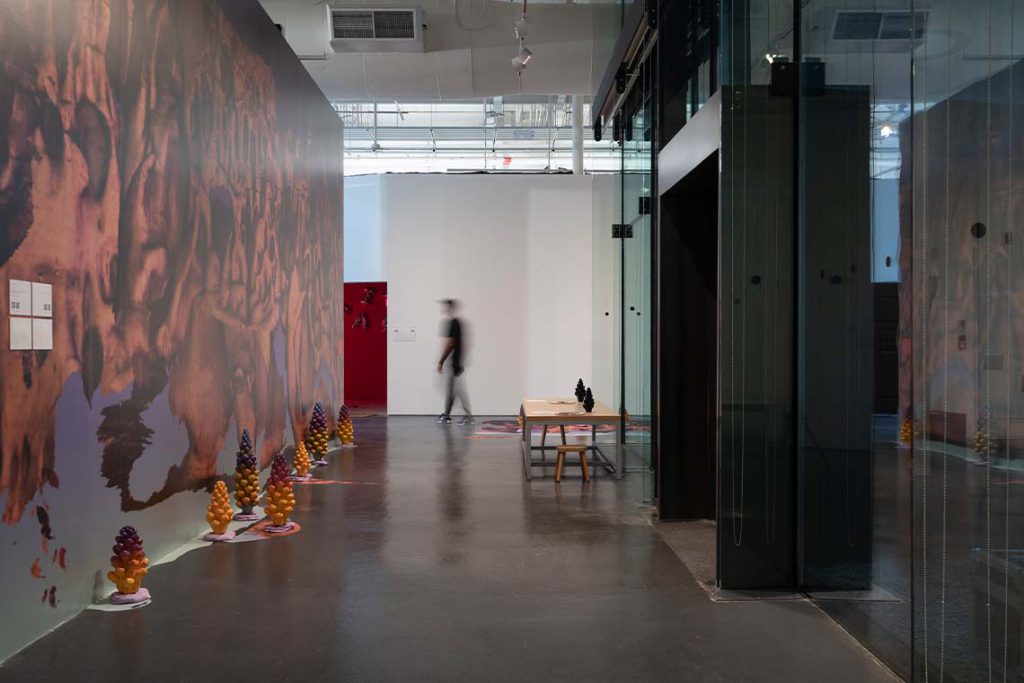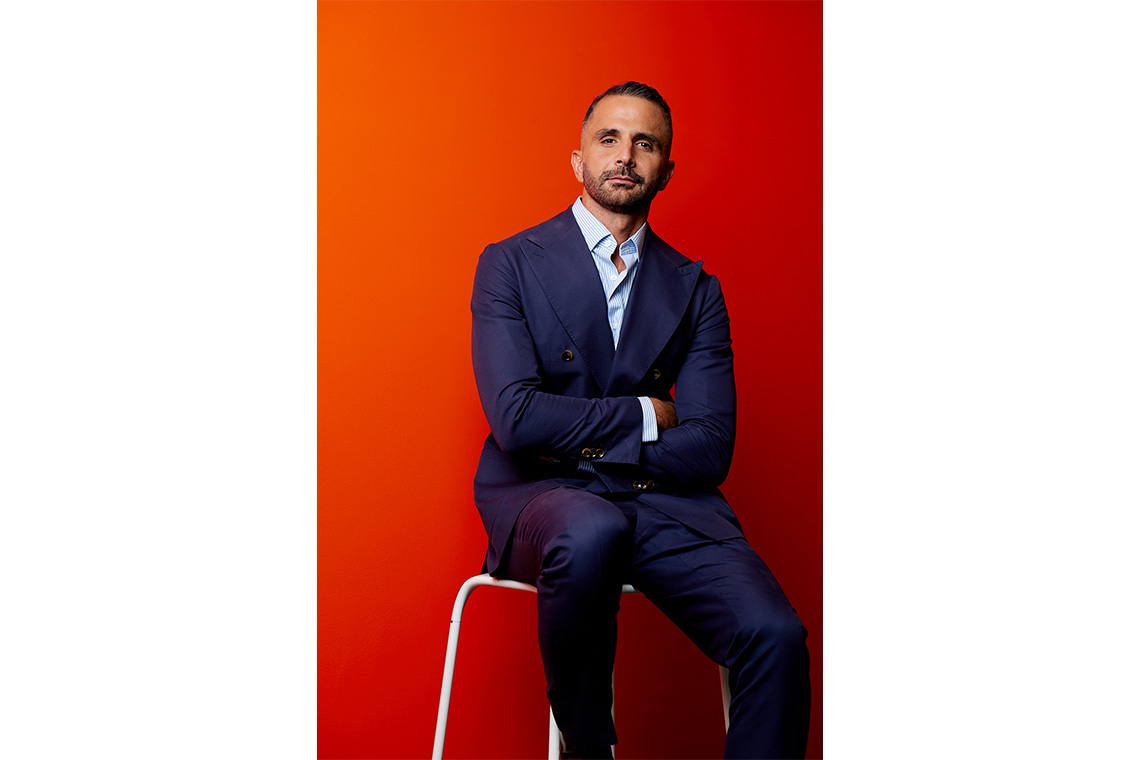Director of 421 Arts Campus, Faisal Al Hassan, discusses the complexities of balancing programming and sustainability within arts institutions.
With the conclusion of COP28 in early December 2023, the arts and culture sector in the United Arab Emirates (UAE) grapples with a paradoxical predicament. In striving to foster dialogue on expansive public initiatives and bolstering grassroots efforts that informally unite communities to safeguard ecosystems, artists and cultural institutions have embraced the subject matter with ingenuity, sensitivity and inclusivity. However, implementing these projects obscures their environmental themes, disrupting the delicate balance between representation and actuality.
Every institutional action comes at an environmental cost; a curatorial footprint that raises questions around impact authenticity. This irony is evident in the complex logistics involved in realising these exhibitions. From the emissions generated by flights necessary to transport artists and curators to the movement of artworks across borders and the energy-intensive installation and fabrication processes, the offset is – for the most part – unavoidable. Unfortunately, the overarching environmental cost of staging an exhibition will often undercut its sustainability message.
This paradox extends to the production of art itself. Many artists are acutely aware of, and actively strive to minimise, their environmental impact, even as they navigate materials and processes that inherently leave traces on the spaces they explore and operate within. As art practices become intricately intertwined with broader sustainability considerations at an institutional level, the issue of responsibility looms large. If the institution continues to exhibit and commission, how can it reimagine a new climate conversation? How can these conversations maintain credibility if our tangible efforts fall short of being held accountable?
Recognising that art-making and exhibition production inherently carry an environmental impact can create a sense of paralysis. It forces us to confront the reality that by its very nature any artistic endeavour leaves an ecological footprint. However, embracing this challenge is essential for institutions addressing environmental concerns. Rather than continuing with business as usual, where works are shipped worldwide without considering their carbon footprint, institutions must consciously strive to minimise their impact.
Cultural institutions must prioritise transparency and accountability as they navigate the complexities of sustainability. This involves discussing openly the environmental impact of our operations and exhibitions, acknowledging our trade-offs in pursuing artistic expression, and engaging in honest conversations with our audiences. Through transparency, we invite a collective dialogue that encourages the public to hold us accountable for our actions, motivating us to strive continuously for more sustainable practices.
We must also prioritise partnerships and collaborations. We can amplify our impact and extend our reach by engaging with local communities, government bodies and other stakeholders. We can advocate for stronger environmental regulations, support grassroots initiatives and promote environmental education through these alliances. By working together, we can leverage the collective power of our society to effect meaningful change. Through these collaborative efforts, we can reimagine the climate conversation and progress toward a more sustainable future.

Cultural institutions must acknowledge and consider the ethical and societal ramifications of climate change. Environmental degradation often disproportionately impacts marginalised communities, exacerbating social and economic inequalities. Sustainable development goals must conscientiously centre human wellness, not only through direct aid to those in need, but also through the actions that affect people’s habitats, such as sustainable sourcing and waste reduction, indirectly improving their quality of life.
A comprehensive approach to environmentalism requires us to consider the ethical implications of our actions, ensuring that our policies foster justice, inclusivity and a shared sense of responsibility for the wellbeing of the planet and its inhabitants. Recognising the interconnectedness of environmental and social issues prioritises a more equitable future. This mindful, comprehensive approach can take many forms, but a primary element of consideration is ‘care’. Community engagement – workshops, exhibitions, film screenings, tours – can all encourage individual sustainable action in ways that are not merely instructional. Thoughtful practices make us inherently life-oriented towards each and every aspect of our work.
It is crucial that programming prioritises both practical and contemplative experiences. Neither is more or less important than the other, but together they can leave a more lasting imprint. We can support exhibitions around climate change while also collaborating with artists to lead workshops that use resources mindfully and inspire a sense of agency within our community. In this way, cultural institutions can play an active role in the vision for a more environmentally conscious and engaged future.
Several art institutions have already joined the cause by implementing their own solutions. For example, for several years now Jameel Arts Centre in Dubai has been conducting carbon audits that have revealed air conditioning and humidity control as the primary sources of emissions. In our hot climate, air conditioning is essential to preserve artwork, but the Centre is making an effort to limit it to a maximum of 22 degrees Celsius in display, handling and storage spaces. The current Sharjah Architecture Triennial, which focuses on resource extraction and scarcity as its theme, highlights how scarcity in the Global South has engendered a culture of reuse, re-appropriation, innovation, collaboration and adaptation. These strategies are a potent means of coping better with current and impending crises.
Our team at 421 has also carefully explored these questions. We acknowledge that our environmental principles must extend beyond the physical realm and encompass ethical considerations regarding our relationships with one another, beyond mere resource management. We, like other leading art organisations in the UAE, have already begun taking steps toward prioritising ethical environmental advocacy in our endeavours.
In 2020 we initiated a transformative shift in our exhibition operations by adopting a modular display model that allows us to reuse and reconfigure materials already present in the space. Furthermore, our shipping policy now ensures that no more than half of the materials required for an exhibition, including the artwork itself, needs to be shipped in. Our working process with artists includes discussing material considerations and their impact, encouraging collaborations and taking proactive steps toward mitigating these effects. We began conducting our own carbon audits this year with the aim of publishing an annual report to maintain accountability and transparency. Lastly, our programming continues to respond to the issues of today and prioritises care for the self, for our communities and for our direct environment.
The role of cultural institutions in environmental awareness goes beyond surface-level involvement. It necessitates a profound examination of our practices, a steadfast commitment to transparency and accountability, and an unwavering dedication to meaningful action. By acknowledging the paradoxes and shortcomings within our sector, we can transform these challenges into opportunities for growth and progress. With a genuine and critical approach, cultural institutions in the UAE can become powerful catalysts for change, inspiring individuals and communities to embrace sustainability and protect our planet for future generations.



